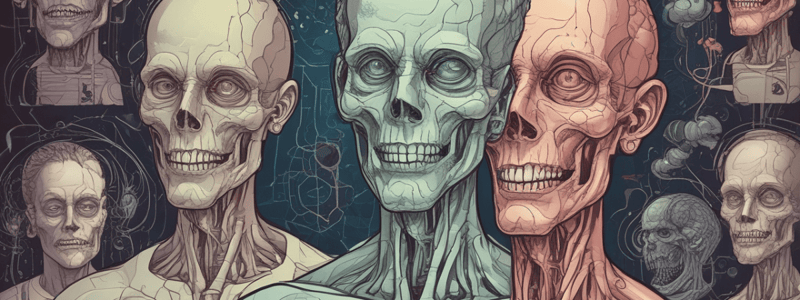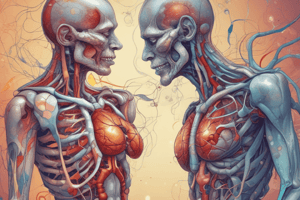Podcast
Questions and Answers
What is the primary mechanism by which TRPV1 antagonists reduce pain?
What is the primary mechanism by which TRPV1 antagonists reduce pain?
- By stimulating inflammatory responses
- By blocking TRPV1 activity (correct)
- By enhancing neuropathic pain models
- By increasing TRPV1 activity
In what type of pain models have TRPV1 antagonists shown efficacy in reducing nociception?
In what type of pain models have TRPV1 antagonists shown efficacy in reducing nociception?
- Only in inflammatory pain models
- In neither inflammatory nor neuropathic pain models
- Only in neuropathic pain models
- In both inflammatory and neuropathic pain models (correct)
What is the major side-effect that has limited the usefulness of TRPV1 antagonists in humans?
What is the major side-effect that has limited the usefulness of TRPV1 antagonists in humans?
- Nausea
- Dizziness
- Hyperthermia (correct)
- Hypothermia
In which species have TRPV1 antagonists been tested for their efficacy in reducing pain?
In which species have TRPV1 antagonists been tested for their efficacy in reducing pain?
What is the primary goal of developing TRPV1 antagonists?
What is the primary goal of developing TRPV1 antagonists?
Flashcards are hidden until you start studying
Study Notes
TRPV1 Antagonists and Pain Management
- TRPV1 antagonists reduce pain by blocking TRPV1 activity
- In rats, TRPV1 antagonists have been shown to be effective in reducing nociception from inflammatory and neuropathic pain models
- In humans, the major side-effect of TRPV1 antagonists is hyperthermia
- Hyperthermia limits the usefulness of TRPV1 antagonists as a treatment option
Studying That Suits You
Use AI to generate personalized quizzes and flashcards to suit your learning preferences.




